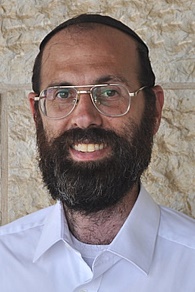Each Person By his Banner
הרב מרדכי גרינברג
נשיא הישיבה
The Midrash Tanhuma on our parsha teaches us about the value of the flag as a sign of distinction and greatness. It states:
"Each person by his banner" (Bamidbar 2:2) ... Israel was sanctified and exalted through its banners. All the nations looked at them and said in amazement, "Who is she that shines through like the dawn?" (Shir Hashirim Songs 6:10) The nations say to them, "Turn back, turn back, the Shulamit" (ibid. 7:1). Join us, come to us, and we will make you rulers... Israel says to them, "Why do you gaze at the Shulamit?" What greatness are you able to give us? Are you able to exalt us like G-d exalted us in the desert? The banner of the camp of Yehuda, the banner of the camp of Reuven ... We learn from this that the banners are a symbol of greatness and a protective fence for the nation of Israel. That is why it says, "Each person by his banner."
We generally consider the flag as a ceremonial display, as part of the formal etiquette of statehood. Actually, though, it has a great inherent value. The Hasidic works deal with the deeper symbolism of the flag, but even we can clearly recognize that the flag has the ability to unify the nation, both internally and in terms of its relations to others. The other nations attempt to abolish the flag of Israel in order to undermine their unity and their nationalistic basis, but Israel stubbornly upholds their flag, because it symbolizes their uniqueness. "Unity" is a sacred concept in Jewish theology. G-d's Oneness is mirrored by Israel's uniqueness, as we say in the Shabbat Mincha prayer, "You are One ... and who is like Your nation Israel, a unique nation in the land." The significance of Israel's flag is underscored in Chazal's statement: "V'diglo alai ahava" - "His banner is beloved upon me" (Shir Hashirim 2:4). The Holy One, blessed be He, said, "The nations of the world all have flags, but the most precious one is the flag of Ya'akov, as it says, "Each person by his banner."
Disgracing the flag is not a new phenomenon. In the early stages of the Zionist movement, Theodore Herzl wrote to Baron Hirsch in one of his letters: I finally had to tell what flag I am choosing, ... and then you ask me mockingly, "What is a flag? A pole and a piece of cloth!" No, Sir! A flag is greater than this. With a flag people are led to wherever you want, even to the chosen land. People live for the flag, and are even willing to die for it. Ultimately, the current flag, with blue stripes in the image of the Tallit, which is the traditional flag of Judaism, with a Magen David added, was established as the Zionist flag. (Hebrew Encyclopedia)
The grandson of the Chidushei HaRi"m (R. Isaac Meir Alter, the founder of the Ger dynasty) relates that in 1863, on the first Shabbat after the Poles raised their national flag as a sign of rebellion, R. Isaac Meir entered his Beit Medrash, and sighed deeply before making Kiddush, saying, "I am concerned, Heaven forbid, lest there be a complaint against Am Yisrael. We see how the Polish people risk their lives for their independence and the liberation of their country from foreign [control], and we - what to we do?!" (Mitzpeh 1953)
Rav Soloveitchik, zt"l, in one of his sermons, ridiculed the debate that existed in his time whether or not to display the Israeli flag. He said (Five essays) :
If you ask me how I, as a Talmudic Jew, view the flag of the State of Israel, and whether it has any halakhic value, I will answer you simply. I do not give any weight to the reverence of a flag, or similar ceremonial symbols. Judaism negates the worship of material objects. However, we cannot overlook the law in the Shulchan Aruch (Yoreh De'ah 364:4) that one who is murdered by non-Jews is buried in his clothes, so that his blood should be seen and avenged, as it says, "I will not excuse their blood" (Yoel 4:21). In other words, the clothes of a Jew achieve a certain holiness when they are stained with his holy blood. This most certainly applies to a blue and white flag which is soaked with the blood of thousands of Jewish youth (religious and irreligious, as the enemy did not differentiate) who fell while protecting the land and the Jewish settlement. It has a spark of holiness with stems from dedication and self-sacrifice. We are all obligated to honor the flag and to relate to it with respect!
קוד השיעור: 3772
לשליחת שאלה או הארה בנוגע לשיעור:

.jpg)



